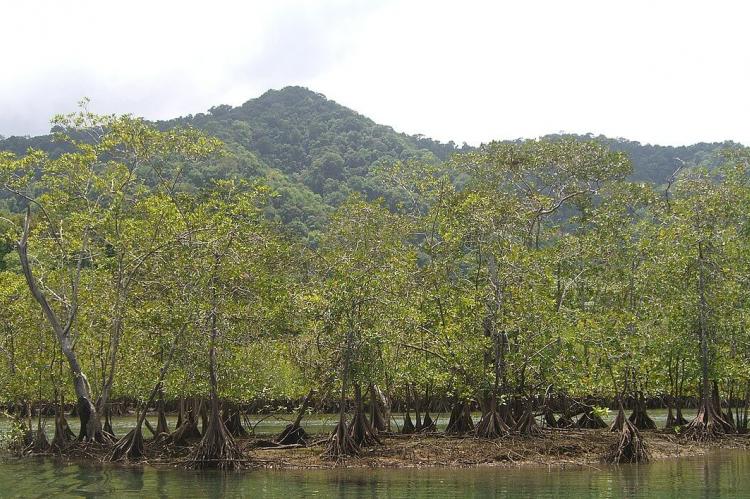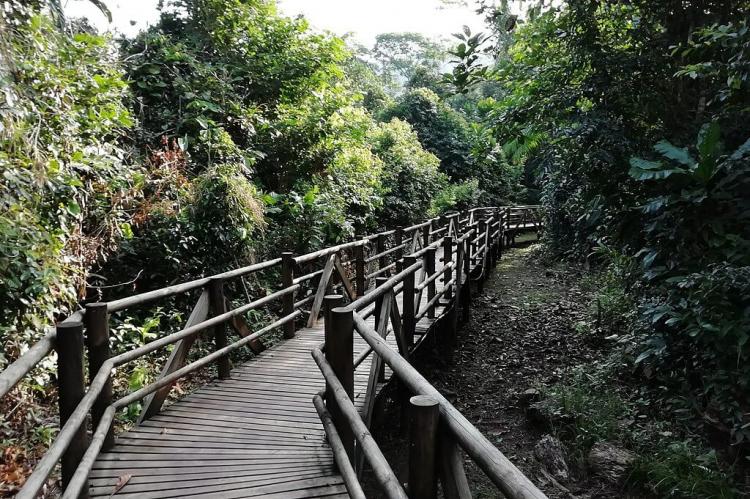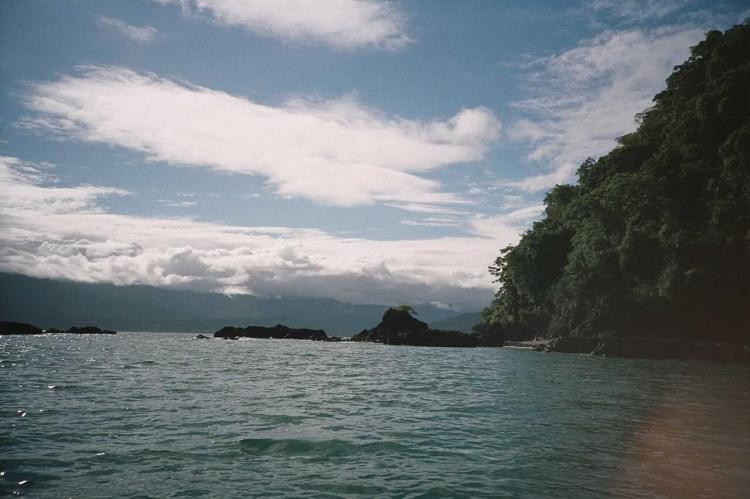Utría National Natural Park: A Vibrant Mosaic of Biodiversity and Culture
Nestled along Colombia's Pacific coast, Utría National Natural Park is a true gem. Here, lush, mountainous rainforests meet the azure waters of the Pacific Ocean. This protected area in the Pacific/Chocó Natural Region of Colombia is renowned for its exceptional biodiversity and cultural heritage.
Utría National Natural Park: A Vibrant Mosaic of Biodiversity and Culture
Nestled along Colombia's Pacific coast, Utría National Natural Park is a true gem, where the lush, mountainous rainforests meet the azure waters of the Pacific Ocean. This protected area, established in 1987, encompasses a vast expanse of 54,380 hectares (134,400 acres), including marine and terrestrial environments. Situated within the Tumbes-Chocó-Magdalena Hotspot, it is renowned for its exceptional biodiversity and cultural heritage.
Geographical Location and Topography
Utría National Natural Park is located in the Pacific/Chocó Natural Region of Colombia, overlapping the traditional territory of the Emberá indigenous people. The park is situated within the Baudó mountain range, with elevations ranging from sea level to 1,400 meters (4,593 feet) above sea level. The Condoto, Condotico, and Valle rivers and the Mundúquera stream originate within the park's boundaries, contributing to the area's rich hydrology.
Climate and Rainfall
The climate in Utría National Natural Park is warm and humid, with temperatures ranging from 23°C to 30°C (73°F to 86°F). The average annual sea-level temperature is a balmy 28°C (82°F). However, the park's most remarkable climatic feature is its extraordinary rainfall. With over 300 rainy days per year, the region experiences some of the highest rainfall levels in the world, reaching up to an astonishing 10,000 millimeters (390 inches) annually. The wettest month is typically October, while February sees the lowest rainfall.
Indigenous and Afro-Colombian Communities
Utría National Natural Park is a haven for biodiversity and a cultural crossroads. The park overlaps with the territory of the Emberá indigenous people, who have well-preserved cultural traditions closely tied to the environment. Additionally, fishing villages of Afro-Colombian people dot the park's coastal areas, further enriching the region's cultural tapestry. The indigenous and Afro-Colombian communities play a vital role in conserving the park's natural resources and providing eco-tourism services to visitors.
Marine Biodiversity
The marine ecosystems of Utría National Natural Park are genuinely remarkable. Along the shore, coral reefs flourish, with 11 of the 16 coral species recorded in the Pacific region represented here. The waters are home to over 180 fish species, ranging from tiny gobies to the massive whale shark (Rhincodon typus). Sea turtles, including the olive ridley (Lepidochelys olivacea), leatherback (Dermochelys coriacea), hawksbill (Eretmochelys imbricata), and green sea turtle (Chelonia mydas), visit the beaches during nesting season.
The park's marine life is further enriched by the presence of common bottlenose dolphins (Tursiops truncatus), oceanic dolphins of the genus Stenella, and occasional visitors such as sperm whales (Physeter macrocephalus), killer whales (Orcinus orca), and Risso's dolphins (Grampus griseus). Notably, humpback whales (Megaptera novaeangliae) visit Utría Cove from June to November to give birth, making the park a crucial breeding ground for this majestic species.
Terrestrial Biodiversity
Utría National Natural Park's terrestrial ecosystems are equally diverse and captivating. The park's forests are home to a wide array of tree species, including timber varieties like cohíba (the symbol of the Chocó Department), níspero, comino, abarco, ceiba, carbonero, guayacán, caracolí, and oquendo. Palms, such as chontaduro and mil pesos, provide essential food sources for local populations, while iraca is used for crafting.
The park's fauna is equally impressive, with jaguars (Panthera onca), cougars (Puma concolor), brocket deer (genus Mazama), white-lipped peccaries (Tayassu pecari), collared peccaries (Pecari tajacu), mantled howler monkeys (Alouatta palliata), black-headed spider monkeys (Ateles fusciceps), giant anteaters (Myrmecophaga tridactyla), brown-throated sloths (Bradypus variegatus), lowland pacas (Cuniculus paca), and Central American agoutis (Dasyprocta punctata) roaming the forests. Additionally, the park is home to a remarkable diversity of reptiles, amphibians, and approximately 380 species of birds spanning all forest strata.
Conservation and Sustainable Tourism
Utría National Natural Park is crucial in preserving the region's exceptional biodiversity and cultural heritage. Collaborative efforts between the park authorities, indigenous communities, and conservation organizations aim to balance conservation and sustainable development.
Eco-tourism initiatives, led by local indigenous and Afro-Colombian communities, provide visitors unique opportunities to experience the park's natural wonders while supporting local livelihoods and promoting environmental stewardship.
Through ongoing research, monitoring, and education programs, Utría National Natural Park strives to raise awareness about the importance of protecting this unique ecosystem and fostering a deeper appreciation for the interconnectedness of nature and culture.


